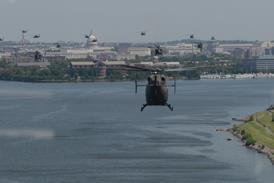Guy Norris/LOS ANGELES
General Electric has begun a "basic feasibility study" into an engine for Dassault Aviation's proposed supersonic business jet. The work is based on its recently developed F414 military turbofan .
The engine maker cautions that the study is preliminary and "there is no discussion about a development programme" at this stage. Dassault, which unveiled study plans for a "Falcon SST" at the 1997 US National Business Aviation Association show in Texas, approached GE to conduct the work after apparently eliminating the Snecma-built M88 engine from its preliminary design concepts.
GE says there is "no Snecma involvement at all" in the study, which is focused on a twin F414 application. The engine was developed to power the Boeing F/A-18E/F combat aircraft and produces 67kN (15,000lb) of dry thrust and up to 98kN in afterburner. Importantly, GE already has an export licence for the engine to support potential re-engining campaigns such as the Saab JAS39 Gripen as well as future export efforts with the F/A-18E/F.
GE says the study faces "huge noise and emissions challenges" as there is no consideration being given to a variable cycle adaptation of the F414 to increase bypass ratio for low speed operation.
Dassault originally defined the Falcon SST with three non-afterburning engines derived from Western subsonic commercial and military poerplants, and offering a cruise speed of Mach 1.8. Although GE says that the outline plans are still vague, the revised twinjet in its current study form will cruise at supersonic speed for only around 20% of the mission. It nonetheless will have a cabin similar in size to that of the Falcon 50 and be capable of flying between Paris and New York in around 4h.
Source: Flight International























